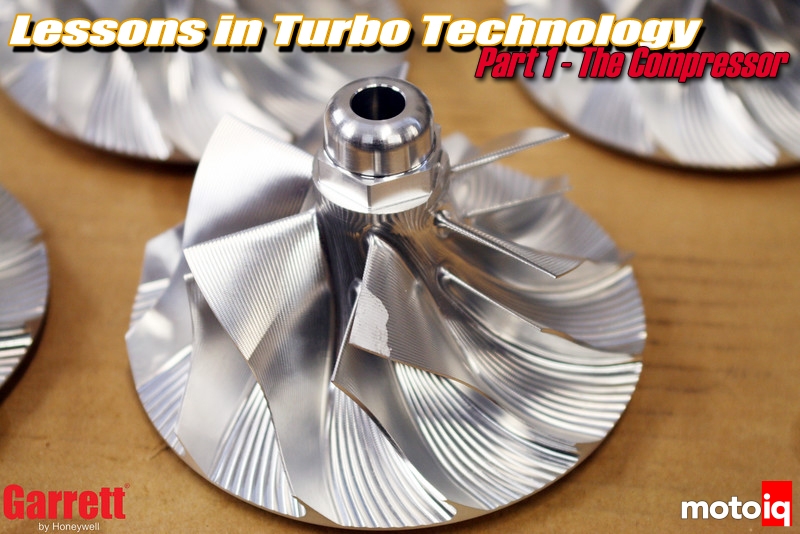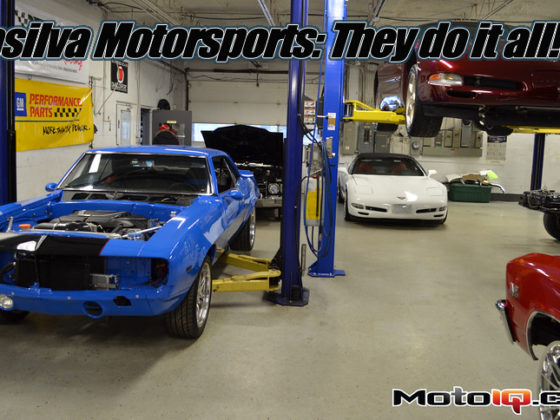,
 A lot of aftermarket wheels are made by cloning features of several successful existing designs by digitizing them and morphing them with CAD, then machining the new part and testing on an engine sometimes a customers engine and sometimes relaying on something as non scientific as verbal feedback without data. Now a lot of good wheels have been designed like this but for optimum performance and long term durability an engineering based approach is better and Garrett has the resources to do this with ease. Garrett has in-house developed simulation tools that are optimized for turbo design. Here you are looking at an FEA output for a compressor blade. FEA stands for Finite Element Analysis. Garrett's engineers use their FEA program to develop the most efficient compressor blade profiles that are still sufficiently strong enough for long term durability. In this picture areas of high stress are represented by warm colors, the hottest colors being the areas of highest stress. In design using FEA you want to reduce the hot areas and make them cooler. In general, when you are trying to make the most of a superior near net shape forged billet, you want to make the thinnest blades and smallest hub for the best aerodynamic efficiency and flow. FEA is a powerful analytic tool in the hands of skilled engineers to make this happen without sacrificing reliably.
A lot of aftermarket wheels are made by cloning features of several successful existing designs by digitizing them and morphing them with CAD, then machining the new part and testing on an engine sometimes a customers engine and sometimes relaying on something as non scientific as verbal feedback without data. Now a lot of good wheels have been designed like this but for optimum performance and long term durability an engineering based approach is better and Garrett has the resources to do this with ease. Garrett has in-house developed simulation tools that are optimized for turbo design. Here you are looking at an FEA output for a compressor blade. FEA stands for Finite Element Analysis. Garrett's engineers use their FEA program to develop the most efficient compressor blade profiles that are still sufficiently strong enough for long term durability. In this picture areas of high stress are represented by warm colors, the hottest colors being the areas of highest stress. In design using FEA you want to reduce the hot areas and make them cooler. In general, when you are trying to make the most of a superior near net shape forged billet, you want to make the thinnest blades and smallest hub for the best aerodynamic efficiency and flow. FEA is a powerful analytic tool in the hands of skilled engineers to make this happen without sacrificing reliably. Garrett also makes extensive use of their in-house turbo optimized CFD programs. CFD stands for Computational Fluid Dynamics and is a program used to optimize the airflow of a compressor wheel. CFD requires a lot of computer power to run and successful application of it is something beyond the realm of a single PC. In this output zones of higher pressure are shown as hotter colors. The idea is to design to reduce these hot areas.
Garrett also makes extensive use of their in-house turbo optimized CFD programs. CFD stands for Computational Fluid Dynamics and is a program used to optimize the airflow of a compressor wheel. CFD requires a lot of computer power to run and successful application of it is something beyond the realm of a single PC. In this output zones of higher pressure are shown as hotter colors. The idea is to design to reduce these hot areas. Extensive use of CFD allows the engineers to develop blade profiles for the best flow and adiabatic efficiency. High adiabatic efficiency means less charge air heating, less shaft power needed to make a particular boost level and less work required of the turbine. Less turbine work means less backpressure and better volumetric efficiency for your engine. This also means that your engine will have a higher knock limit for a given boost pressure allowing more aggressive tuning of the engine management system. Getting top compressor efficiency will have a cascading effect on increasing your engines power. This sort of engineering requires a great amount of resources which cannot be duplicated in the aftermarket very easily.
Extensive use of CFD allows the engineers to develop blade profiles for the best flow and adiabatic efficiency. High adiabatic efficiency means less charge air heating, less shaft power needed to make a particular boost level and less work required of the turbine. Less turbine work means less backpressure and better volumetric efficiency for your engine. This also means that your engine will have a higher knock limit for a given boost pressure allowing more aggressive tuning of the engine management system. Getting top compressor efficiency will have a cascading effect on increasing your engines power. This sort of engineering requires a great amount of resources which cannot be duplicated in the aftermarket very easily.  OEM levels of engineering also means stringent and rigorous validation testing. Here a Garrett SFI certified GTX55R turbo is prepped for bench testing. The bolts across the exducer to contain the turbine wheel in case of failure are mandated by the SFI. In validation testing the turbo is run at high pressure ratios near the surge line for hours at a time on a hot test bench to test the robustness of the compressor, turbine and bearing system. To confirm durability, The turbo is also subjected to thermal and pressure survey testing, heat cycle testing, internal wastegate testing, and shaft motion testing. The turbo must also pass a Burst and Containment test to where it is spun to the point of catastrophic failure. The turbo's housings must contain all of the centrifugally flung parts of the exploding turbo. This reduces the chance of driver and bystander injury in the case of an extreme parts failure, critical when turbos easily spin at over 80,000 rpm with small turbos spinning at up to 300,000 rpm! Burst and Containment testing is critical for end user safety. This sort of testing is very intensive and expensive requiring elaborate bespoke test equipment and is generally not done in the aftermarket. Validation testing, design changes and re evaluation is not done by the aftermarket but Garrett does it to assure that turbos they release will be durable, great performing and safe with data to back it all up.
OEM levels of engineering also means stringent and rigorous validation testing. Here a Garrett SFI certified GTX55R turbo is prepped for bench testing. The bolts across the exducer to contain the turbine wheel in case of failure are mandated by the SFI. In validation testing the turbo is run at high pressure ratios near the surge line for hours at a time on a hot test bench to test the robustness of the compressor, turbine and bearing system. To confirm durability, The turbo is also subjected to thermal and pressure survey testing, heat cycle testing, internal wastegate testing, and shaft motion testing. The turbo must also pass a Burst and Containment test to where it is spun to the point of catastrophic failure. The turbo's housings must contain all of the centrifugally flung parts of the exploding turbo. This reduces the chance of driver and bystander injury in the case of an extreme parts failure, critical when turbos easily spin at over 80,000 rpm with small turbos spinning at up to 300,000 rpm! Burst and Containment testing is critical for end user safety. This sort of testing is very intensive and expensive requiring elaborate bespoke test equipment and is generally not done in the aftermarket. Validation testing, design changes and re evaluation is not done by the aftermarket but Garrett does it to assure that turbos they release will be durable, great performing and safe with data to back it all up.



1 comment
This is not appropriate to spam this article.